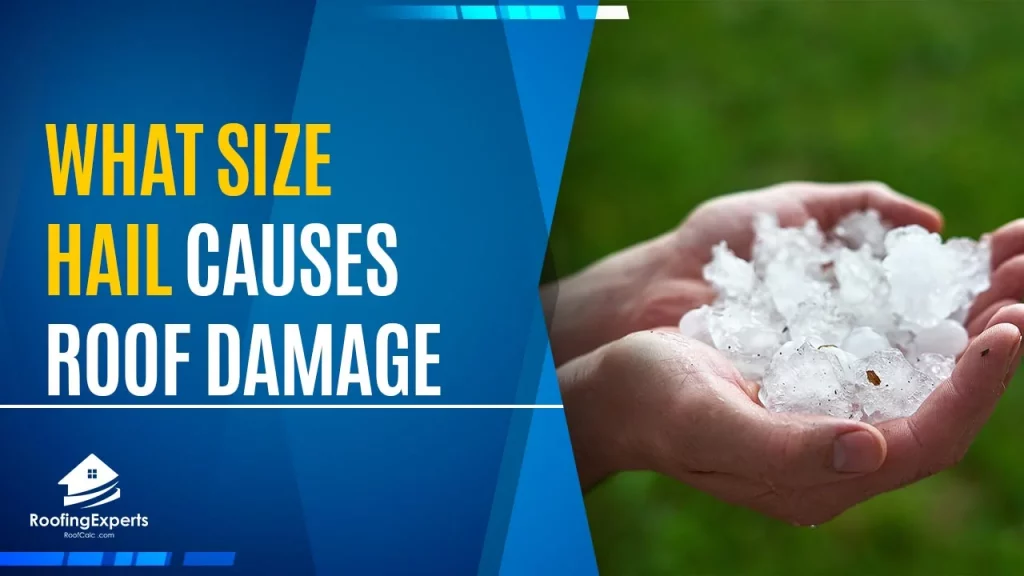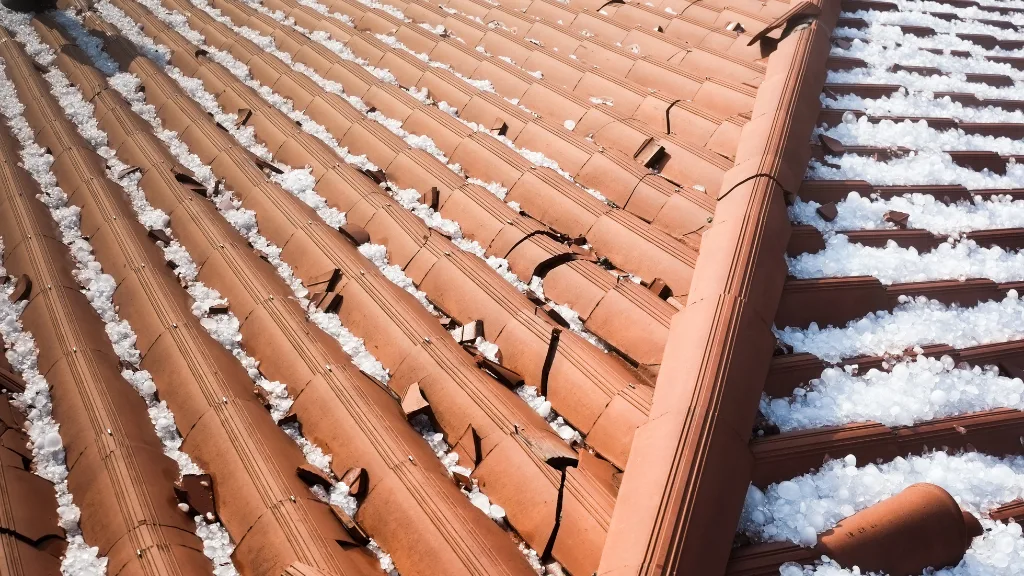
Hail is an expensive problem for homeowners. Hail damage is most common during the spring and summer months when hailstorms are more frequent.
If you’ve experienced storm or hail damage to your roof, it’s important that you seek professional help as soon as possible. Once a roof sustains hail damage, there can be long-term effects that may be expensive to repair. In this blog post we go over What Size Hail Causes Roof Damage.
What Size Hail Causes Roof Damage
Different hail sizes can do different levels of damage to your roof. They are the size of a quarter to 4.5 inches.
If you live in a region of the country where hail storms are common, it’s important to know what size hail can damage your roof.
- The smallest hailstones that cause damage on roofs measure about one-quarter inch (0.25”); these little gems often go unnoticed because they do not fall straight down, but instead bounce around on the roof.
- When it comes to size, these are fairly small hazards for your roof; however, they can still cause damage depending upon how long they stay on the roof and if any ice dams form during a storm.
- If hailstones measure between 0.67 inches (a bit smaller than a 50-cent piece) and one inch, you’re likely to notice the damage after a storm.
- Hailstones of this size can cause noticeable dents on your roof as well as holes in shingles that expose the underlayment beneath.
- These larger hailstones also pose more risk for ice dams or icicles during a winter storm event.
- If hailstones are between one and two inches, you’re looking at a significant amount of damage.
- Depending on the type of roofing material you have installed, dents from hail this size may be easy or difficult to repair; additionally, larger holes in your shingles can expose more areas for water seepage through the roof.
- Even if your roof is in good condition, hail this size can damage gutters and other areas around the exterior of your home.
- If you think about what a softball looks like from far away, you’ll have an idea of how large hailstones are between two inches and three-quarters (a bit less than four inches) when they strike your roof.
- Roofing materials that are not particularly strong can be severely damaged by hail this size; you may even experience some damage to the exterior of your home, depending upon how much larger than four inches these hailstones measure when they fall on your property.
- Hailstones between three and four-and-a-half inches in diameter can cause significant damage to your roof, even if it’s in good condition.
- Roofing materials like asphalt shingles and wood shakes are particularly susceptible to damage from hail this size; however, metal roofs may be able to withstand the impact of these hailstones with no problem at all.
- At this point, you might also notice some damage to the exterior of your home as well.
- If hailstones measure four inches or more, you can expect a large amount of damage for roofing materials that are not designed to withstand tremendous force from falling ice and snow.
- These larger pieces of hail will cause shingles and other types of roofing material to crack; it’s even possible for entire roof sections to be peeled back.
- Additionally, exterior damage like broken gutters and windows may occur with hail this size.
If you live in an area where hail storms are common or your property is particularly vulnerable due to its location during a storm (for example, if it’s near the coastline), it’s wise to get a roof inspection as soon as possible after a storm.
Storms happen frequently and can quickly cause damage to your home’s exterior; this is why it’s so important that you don’t wait too long before getting help from an experienced professional.
Why Hail Roof Damages Must Be Repaired
If hail causes any damage, it needs to be repaired immediately because the longer ice and snow remain on your roof, the more damage it will cause.
Repairing your roof in a timely manner is important for many reasons:
It’s possible that you may not experience any problems with ice or snow after hail damages your home; however, this could change if another storm hits and causes additional accumulations on top of everything already sitting there.
Although ice and snow don’t pose a direct threat to your home, they can make it more difficult and dangerous for you and your family members. For example:
If ice dams form on the shingles of your roof, water seeping through these areas may drip under the eaves or into other exterior walls; this moisture could lead to mold growth as well as other potential problems.
It’s possible that you may not even notice the damage hail causes on your roof until it becomes a much larger problem; however, getting help from an experienced professional is still highly recommended because they can identify areas where water might seep through and cause more serious issues throughout your home.
Repairing Roof Damage From Hail
Repairing hail damage can be difficult because the area may seem like it’s in good condition; however, professionals who are familiar with different types of roofing materials will know how to identify problems.
It’s important you hire a reputable company for your roof repair needs after hailstorms; this is especially true if you’ve had any damage to your home. It’s also good to ask your insurance company for a coverage on hailstorm damages.


